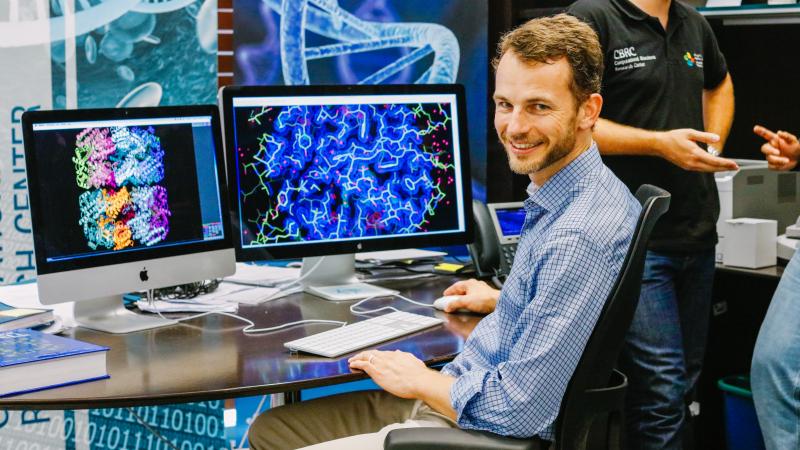© 2017 KAUST
ContaMiner is a web-based, open-source program developed by a unique interdisciplinary team in KAUST. This program is already saving time for international researchers.
“How much can you understand and repair a car if you don’t have a detailed picture of what is going on under the hood?” said KAUST Associate Professor Stefan Arold. “Proteins are life’s workhorses: their function and dysfunction both create life and end it. Each protein’s amino acid sequence folds into a particular 3D structure that is required to support its function. If you want to understand, affect or engineer a protein’s function, you need to know its 3D structure,” he explained.
The process to determine that structure begins by purifying and crystallizing the protein under investigation. The protein crystal is then bombarded by extremely powerful X-rays, which diffract in various directions, giving an indication of its structure. Researchers then apply “molecular replacement,” which compares the target protein crystal to the 3D structure of other known similar proteins.
But for the researchers to compare their protein with similar ones, first they need to know how its amino acids are arranged. ContaMiner can help researchers determine if they are even looking at the right protein to begin with.
“The protein we crystallized might not be the protein we thought it was but instead an unknown contaminant,” explained Arold. Protein-based contaminants can, more often than previously thought, get crystallized instead of, or in addition to, the protein under study. These might come from the organism that originally produced the protein or occur during the purification or crystallization process.
“Scientists often waste months of work before they identify the error and the identity of the protein contaminant that they had unintentionally crystallized,” said Arold.
Arold’s team has worked tirelessly to compile a preliminary database, called ContaBase, of 62 known contaminants. “Contaminants were a known but underappreciated problem because many cases went undetected,” said Arold. Even in cases where contaminants are finally identified, this information often goes unpublished since the experiment was considered a failure. Often researchers report issues of contamination in online forums rather than peer-reviewed publications. “Because of this, nobody had a good idea of how many and which contaminants might occur and crystalize,” he continued.
ContaMiner changes this. Now, researchers can submit their X-ray diffraction data to the program, which compares it with an updateable database of known contaminants. “If a contaminant is present, ContaMiner can typically detect it in only 5-15 minutes,” said Arold.
Several hundred researchers have used the program since it was first described in late 2016 in the Journal of Applied Crystallography. Many from the crystallography community have helped update ContaBase to now include 71 contaminants. “It’s an ongoing community effort,” said Arold. ContaMiner has also been selected to be included in an online server, called CCP4, which is a highly selective collection of software related to structural biology and is the most widely used resource worldwide," explained Arold.
Read the full article

